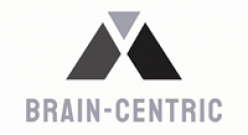Our case studies show that Brain-centric Design delivers results in 43% less time.
Industry leaders in high-stakes engineering (such as aerospace and auto), international banking organizations, large-scale medical and health facilities, global retail and manufacturing icons, K‒12 schools, and even mom-and-pop shops see a huge benefit from this methodology. We’ve even used BcD with a large manufacturer to help highly specialized and trained engineers completely relearn their jobs within months. After working with us and using BcD, both trainees and trainers end up liking their positions more.
We’ve gone into call centers and reduced attrition to zero within the first 12 months. That’s because when we present, learners retain the information. With BcD, nothing is forgotten, because learners are invited to think critically about their position, enabled to transform from a routine expert to an adaptive expert, engaged to adopt a growth mindset, and helped to understand enough to know where to find the answers they need.
BcD facilitators and Brain-centric Instructional Designers (BcIDs) have helped trainers take new hires who were just starting to meet their target performance goals in 18 months and reduced that to 12 days. That isn’t a typo. But the best news for the corporate execs who have contracted BcD teams is their improved bottom line, which often begins with BcD “self-funding” engagements—the savings in budgeted time pays for the corrective action to cognitive training. We’ve found the time spent learning and applying BcD pays for itself many times over.

The BcD method produces astounding results because it is the culmination of decades of peer-reviewed research in the areas of cognition and psychology, and aligns learning with how the human brain works and how people learn. It bridges the gap between education and neuroscience to provide a plan that works for every single learner, every single time.
These results aren’t surprising…at least not to us. Many corporations employ training that is too long, inefficient, and only partially successful. On the ground, that translates into preventable mistakes, a large number of retakes, time lost being unproductive, and high attrition rates. All these items are excruciatingly expensive, so it is no wonder that training and development departments have a bad rep.
In retrospect, it’s easy to predict that using a model of teaching that delivers information the way the brain likes to receive it would produce results. That’s because this isn’t guesswork. It’s not based on anecdotal evidence or a gut feeling.
It’s not clever…it’s science.
